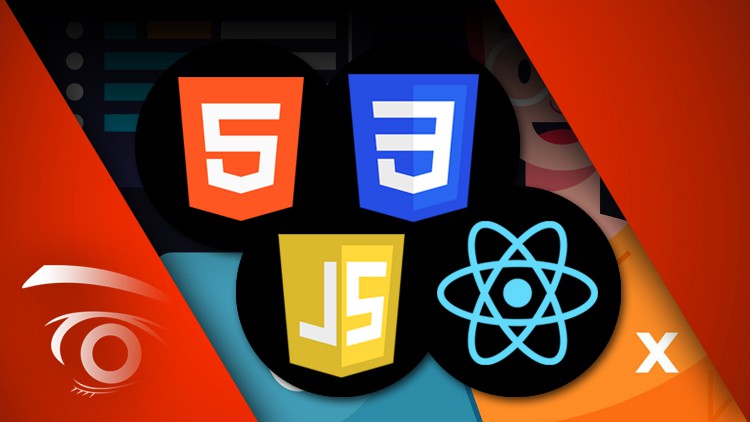
Build: Mobile Responsive Web Pages using CSS | Dynamic Web Apps in React | Interactive UI Components | E-Commerce Sites
What you will learn
Learning the Foundations of HTML, CSS, JavaScript
Understanding the basic structure of a web page
Working with HTML, CSS, and JavaScript syntax
Building Lists, Formatting Text, and working with Tabular Data in HTML
Building Forms using Post vs. Get Method
Building Navigation Components such as Menus, Input Areas, and Buttons in HTML
Building Responsive Web Page layouts using Cascading Style Sheets (CSS)
Working with DIVs, IDs, and Style Properties in CSS
Styling Images, Backgrounds, Borders, and Text on Top of Images in CSS
Working with CSS Positioning (Static, Relative, Absolute, Fixed, Float)
Styling Links and Tables in CSS
Understanding the Document Object Model (DOM)
Building Simple Interactive Web Page components using JavaScript
Working with JavaScript Arithmetic Operators and Data Types
Exploring JavaScript Arrays, Loops, and Events
Understanding Operator Precedence, Objects, and Functions in JavaScript
Building Dynamic Web Apps in React
Debugging and React Events
Exploring Code Pen, JSON Server, and React Props
Working with the React State Hook and Styling React Projects
Description
This course is designed to teach students the fundamental concepts and skills needed to build modern, responsive web pages. The course covers key topics including the basic structure of a web page, building mobile responsive web apps, working with HTML, CSS, and JavaScript syntax, and building various web components using these languages.
First, students learn the structure of a web page and how to create mobile responsive sites that adapt to different screen sizes and devices. This will include an introduction to HTML, which is the markup language used to create basic web page structure. Students will learn various HTML elements and how to use them to create headings, paragraphs, lists, images, and other static content.
Next, students explore CSS, the language used for styling and layout customization. CSS works in conjunction with HTML to create visually appealing site designs that stand out. Here, students learn to effectively use CSS selectors, properties, and values. This will include an introduction to responsive web design and using CSS media queries to create web pages that adapt to different screen sizes.
In addition to learning the basics of HTML and CSS, students will also learn JavaScript, the programming language used to add interactivity and dynamic functionality to web pages. Students will learn the Document Object Model (DOM) and how to use JavaScript to dynamically manipulate page elements. We also explore JavaScript events, loops, arrays, and other programming concepts.
The course will also cover more advanced topics such as building navigation components using HTML, creating forms using the post vs. get method, and working with DIVs, and IDs. We also cover styling images, backgrounds, borders, and text on top of images in CSS. Students will learn the different CSS positioning options (static, relative, absolute, fixed, float) and how to use them to create complex web page layouts.
In the JavaScript section of the course, students learn the Document Object Model (DOM) and how to use JavaScript to manipulate the elements of a web page. Here we explore, events, loops, arrays, and other programming concepts such as operator precedence, objects, and functions.
Once students have a handle on the foundational three languages, we dive into React JS – a powerful JavaScript library used for building stylish, dynamic web applications and UI components. Through a series of hands-on projects, students will build a fully functional connect-4 game, a calculator, and an e-commerce site complete with categories, checkout features, and more.
This course is designed for students with little or no previous experience in web development, but it can also be beneficial for students who have some experience and are looking to improve their skills. With the knowledge and skills gained in this course, students will be prepared to take on more advanced web development projects and to continue learning about new web development technologies.
Content